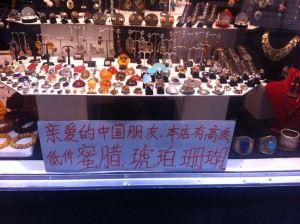Children should travel rearward facing until they are three-four years
Gothenburg, June 30(Greenpost)–Small children should travel in rearward facing child restraints for as long as possible, at least until they are three to four years old, recommended Volvo Cars expert.
“Older children should use a booster cushion until they are 140 centimetres tall and at least ten years old. This is Volvo Cars’ firm recommendation. The knowledge is based on real life accidents, together with advanced research at Volvo Cars’ state-of-the-art crash laboratorym,” said Lotta Jacobsson, Volvo Cars’ child safety specialist.
Over 50 years of child safety development
Since the early days Volvo Cars has introduced numerous world firsts, such as the three-point safety belt in 1959. This life-saving safety belt is now integrated in all car models in the world.
Volvo Cars started researching child safety in the early 1960’s. This was a time when space journeys were hot news. On the black and white TV screen you could see the astronauts lying on their backs to even out the forces during take-off and landing. Using the entire back to spread the forces was incorporated in the first child restraint prototype, which was tested in 1964. Since then, Volvo Cars has been setting the standard in child safety.
“Our first rearward facing child restraint was launched back in 1972, says Lotta Jakobsson, Child Safety Specialist at Volvo Cars Safety Centre. Volvo Cars has also been a driving force in international co-operations such as the making of the ISOFIX standard. ISOFIX is a standardised anchoring system that makes it easier to fit a child restraint correctly in any car equipped with the system.
Based on accident research
In 1970 the Volvo Traffic Accident Research Team was established to study car crashes in Sweden involving newer Volvo models. Since then the team has studied approximately 2,500 traffic accidents down to the smallest detail, and the knowledge they gain is used in developing new safety technologies. Information from more than 43,000 accidents is stored in a statistical database. For example, SIPS (Side-Impact Protection System) and WHIPS (Whiplash Protection System) are direct results of this accident research.
” Our engineers identify interesting areas, develop solutions and incorporate them in the oncoming Volvo model”, says Lotta Jakobsson. When that model is out on the streets, the research of real life car crashes continues to help decide which areas to focus on in next generation. It is a continuous process.
The statistical database at Volvo Cars includes more than 4,500 children. The accidents have been studied carefully and reveal the following:
- A child in a rearward facing child seat is approximately 90% less likely to be injured in an accident compared to an unrestrained child.
- Using a booster cushion the child runs an approximately 75% lower risk of being injured compared to being unrestrained.
Advanced safety centre
Volvo Cars Safety Centre is the world’s most advanced crash laboratory, where real life collisions can be reconstructed and studied. For example crash tests can be run with two moving cars in different angles, creating different forms of impact. Volvo Cars uses this research together with accident data from real life to enhance road safety for various road users: the driver, the passengers and people outside the car – pedestrians as well as people in other vehicles.
– All children must always be restrained properly. They should travel facing the rear until at least the age of three-four and use restraints for older children up to 10-12 years of age, says Lotta Jakobsson.
Volvo Car Group in 2014
For the 2014 financial year, Volvo Car Group recorded an operating profit of 2,252 MSEK (1,919 MSEK in 2013). Revenue over the period amounted to 129,959 MSEK (122,245 MSEK). For the full year 2014, global sales reached a record 465,866 cars, an increase of 8.9 per cent versus 2013. The record sales and operating profit cleared the way for Volvo Car Group to continue investing in its global transformation plan.
Volvo has been in operation since 1927. Today, Volvo Cars is one of the most well-known and respected car brands in the world with sales of 465,866 in 2014 in about 100 countries. Volvo Cars has been under the ownership of the Zhejiang Geely Holding (Geely Holding) of China since 2010. It formed part of the Swedish Volvo Group until 1999, when the company was bought by Ford Motor Company of the US. In 2010, Volvo Cars was acquired by Geely Holding.
As of December 2014, Volvo Cars had over 26,000 employees worldwide. Volvo Cars’ head office, product development, marketing, and administration functions are mainly located in Gothenburg, Sweden.
Volvo Cars’ head office for China is located in Shanghai. The company’s main car production plants are located in Gothenburg (Sweden), Ghent (Belgium), and Chengdu (China), while engines are manufactured in Skövde (Sweden) and Zhangjiakou (China) and body components in Olofström (Sweden).

